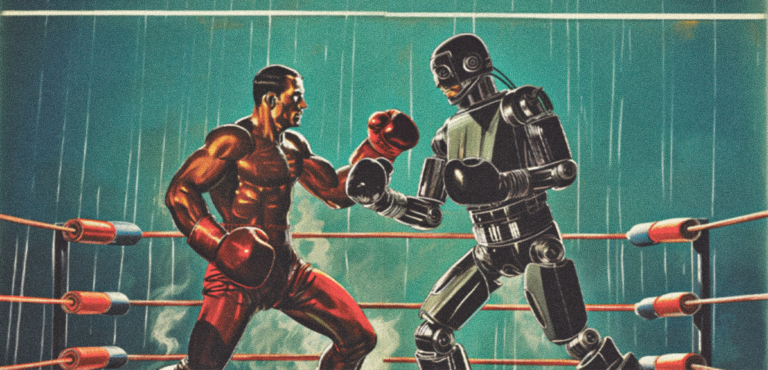Article

Navigating AI and Human Creativity for the Future of Work
As radical technological development redesigns the future of work, CTOs are confronted with the task of navigating the distinction between AI and human creativity.
While AI is becoming increasingly smart and capable of performing tasks that were previously thought to be done by humans solely, the associated relationship between AI and human creativity has led to unjust friction. Meaning, that the integration of AI into creative processes has given rise to complex ethical and moral considerations that demand a reevaluation of the creative workflow, where humans will have to acclimatize to harness AI’s capabilities effectively while ensuring the essence of the human touch is not lost.
In all, this collaboration has its own challenges. Issues around accountability, transparency, and biasness need to be carefully considered to ensure that the partnership remains beneficial for all involved.
So how can we make sure that AI and human creativity coexist harmoniously and productively? Here are some of the most effective strategies for resolving conflicts between the two entities.
Know the limits of AI
It’s important to understand that AI is not a magic wand that can solve all problems smoothly. AI tools operate on complex algorithms that rely on vast amounts of data to make decisions, which means they are prone to errors.
By educating users about AI’s limitations and capabilities one can set realistic expectations and make informed decisions. Users must understand the context in which AI can be applied and how much it can be relied upon.
Similarly, humans ability to read between the lines, understand corporate culture, and navigate complex dilemmas and personal responsibility is of critical distinction.
Communicate clearly
Collaboration with AI requires strong communication. As AI becomes more prevailing in the workspace, users will need to learn how to effectively communicate with both humans and AI. This also involves building trust, confidence, and understanding between team members to ensure everyone is on the same page when it comes to achieving objectives and tasks.
Embrace diversity in AI and human creativity
Just like human workers, AI systems too are diverse and dynamic. AI can have different types, levels, and domains of intelligence and creativity. Users need to understand and acknowledge its intense diversity. By erasing differences and tapping into a wealth of diverse perspectives, users can ensure that AI technologies enrich our world with new solutions altogether.
Cultivate adaptability
Apart from reskilling and upskilling, adaptability plays a critical role in ensuring success in an AI-driven workplace. One way to foster adaptability is to adopt a growth mindset, which involves being open to change, embracing new technologies, and continuously learning to stay ahead of the curve. Users need to view challenges as opportunities for growth rather than treating them as obstacles or threats. This mindset will help professionals to navigate the rapidly evolving landscape of AI and automation.
Learn to manage emotions and stress
Humans tend to experience anxiety, anger, or frustration when dealing with errors, or challenges. Likewise, AI systems can also respond to emotions and stress in different ways, depending on their design, capabilities, or settings. Hence, users need to acknowledge and express such incidents appropriately. By seeking assistance from subject matter experts and by finding a balance between cooperation and competition, users can get their tasks completed in an effective manner.
Take help from AI but don’t depend on AI
AI can be a valuable assistant in jobs that require data analysis and pattern recognition. However, keep in mind that AI is just a tool. It is not a replacement for human creativity and judgement. Additionally, AI doesn’t have the ability to express feelings or experience personal connections, which are often drivers of creativity.
The future of AI and human creativity
It’s conceivable that the future of AI and human creativity is likely to involve more collaboration and interaction. The future of creativity and innovation, shaped by both artificial and human minds, promises a tapestry of possibilities that can enrich society in unprecedented ways. This however entails crafting ethical guidelines and developing AI that respects and enhances human creativity during the next iteration of the internet. This will help professionals navigate the evolving landscape, and continuously explore the unreached boundaries to create solutions that benefit everyone around us.
In brief
As AI technology develops further, it is expected that more and more people will work together to propel development. While there is a potential for rivalry and a lot of synergy between the two, users may have to find novel approaches in order to collaborate and function together as efficiently as possible.